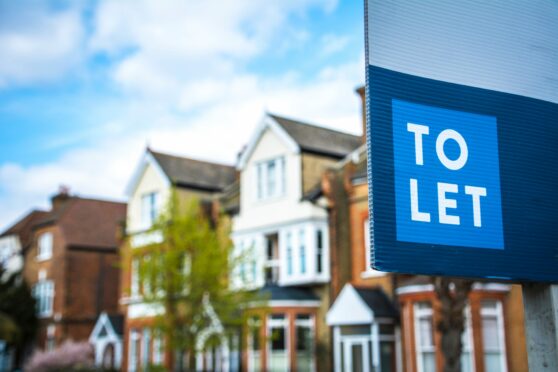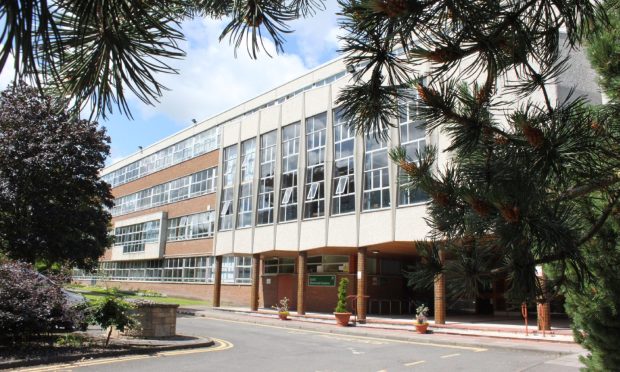Renters in Fife are paying £200 more a month on average for four-bedroom properties compared to last year.
Monthly rent prices for four-bedroom properties in Fife have increased by 16.5% since last year, the biggest increase of any area in Scotland.
New figures from the Scottish Government show the average cost is now £1,330 per month, compared with £1,142 in 2020. The average increase in Scotland was 1.2% across the same period.
Private rents in Fife have increased at their fastest rate since 2010 for all property types except one-bedroom homes, with larger properties seeing progressively bigger rent increases.
While costs have tended to increase in most areas of Scotland over time, rent rises in Fife for bigger properties have increased faster when compared to the rest of Scotland.
Between 2010 and 2021, inflation in Scotland measured by the Consumer Price Index (CPI) means prices have risen by 24.3% overall. In comparison, the average monthly rent for four-bedroom properties in Fife has risen by 72%.
Three-bedroom, two-bedroom and one-bedroom-shared properties have also risen above the rate of inflation at 38.2%, 32.8% and 33.5% respectively.
How do Fife rents compare to other areas?
Fife is now the fourth most expensive area to rent four-bedroom properties out of 18 areas in Scotland. It has climbed the ranks from 14th in 2010- at which point it was one of the cheaper areas to rent this type of property.
Why have house rental prices gone up in Fife?
A number of factors may be driving rent increases, including changes in demand brought about by the pandemic.
Danielle Cameron, lettings manager at Maloco + Associates, said: “We have seen quite a marked increase in people looking for larger homes to rent in the Dunfermline area.
“In my opinion, there are a number of factors at play here – not least of which is a pandemic-driven shift in work/life patterns.
“For many, the daily commute into the office is a thing of the past. This means that those who have been living in flats especially, find that they can move just across the Forth to Fife, and rent a three- or four-bedroom house for the same price they’re paying for a two-bedroom flat with no outside space in Edinburgh.”
She added: “The memory of the first lockdown and that summer, being cooped up in a flat with a laptop balanced on your knees or the coffee table, will live long in the memory, and I think more and more people see both a garden and a dedicated work space as close to an essential.
“Dunfermline offers this option at reduced cost, and is still just 30 minutes to Edinburgh city centre outside of rush hour which, due to remote and flexible working, is no longer the consideration it once was.
“In terms of the spike in the actual rent payable, that is explained by simple supply and demand economics. Demand exceed supply, with supply limited due to the fact that traditionally, landlords don’t purchase larger properties for their portfolios.
This means that larger homes seldom come onto the rental market, and when they do, there tends to be a scramble for them.”
“One property advertised by Morgans yesterday afternoon received nineteen enquiries to view by 9.00 am today.”
Clive Loble, who works in the lettings department at Morgans Property, has also noticed an increase in demand.
He said: “There has been a definite increase in demand, which is believed to be a consequence of people seeking more space following the pandemic.
“One property advertised by Morgans yesterday afternoon [Monday, November 23] received nineteen enquiries to view by 9.00 am today. This demand and other increased costs for landlords has resulted in a rise in average rental valuations in the second and third quarter of 2021.”
How much have house prices increased this year in Fife?
It is not only rent prices that have been rising quickly in the area. The average cost of buying property in Fife increased by 11.2% between September 2020 and September 2021, from £161,726 to £180,778.
This was a larger increase than the Scottish average property price which increased by 8.2%, from £190,018 to £205,510, in the same period.
Some areas of Fife saw even bigger increases in house prices. Property values in East Fife rose by more than 26% in one year, according to research by property experts ESPC.
For more information on the housing and rental market, visit our Scottish housing market tracker to keep up to date with changes in your local area and across the country.










